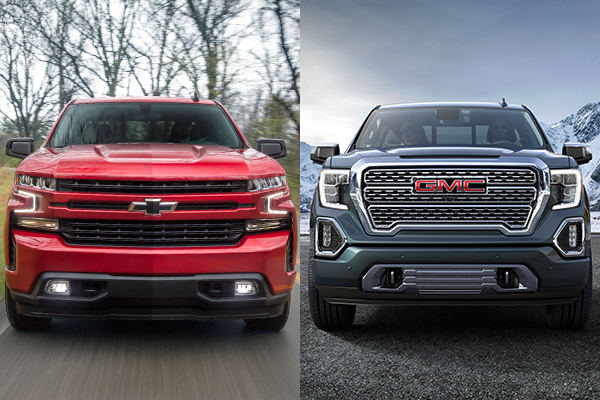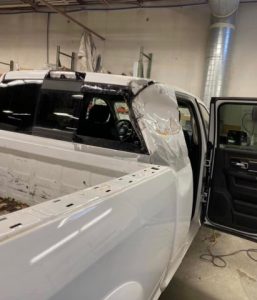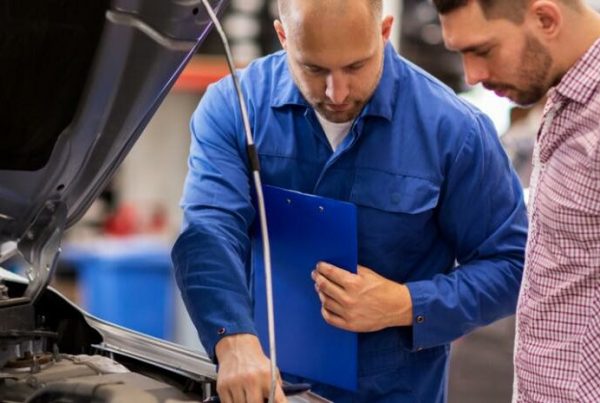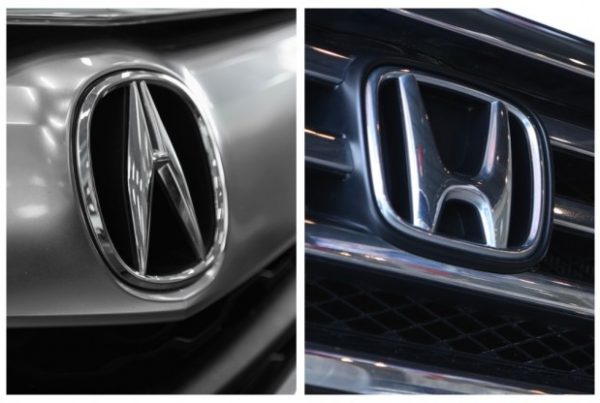Every year, sometimes more than once a year, vehicles are changed from one model year to the next. These changes can be minor cosmetic changes or significant changes to the way the vehicle is constructed. In the case of the 2019 Chevy Silverado and GMC Sierra, there have big changes to both vehicles from the previous 2018 model. We at Rocco’s Collision Center want Philly drivers to know what these changes are, as it can ultimately mean the difference between a safe repair and one that puts your life at risk if a technician isn’t up-to-date on these changes.
Because of these extensive changes, Ford and GMC released updated repair procures on how to repair their Silverado and Sierra vehicles for the 2019 model year. These repair procedures are vital to maintaining the warranty and safety of your repair, but most body shops will ignore them. They feel their “experience” is more important than following what the manufacturer says, and as a result, you’re left with a car that is nowhere near the way it should be. Not to mention, both the Silverado and Sierra are made with a combination of steel and aluminum materials, known as a “mixed materials strategy.” No matter what an auto body shop tells you, you cannot repair an aluminum vehicle the same way or with the same tools as a steel vehicle.
Because of the “mixed materials strategy,” the 2019 Silverado is 450 pounds lighter than the previous model. In fact, the body on the 2019 Silverado weighs 88 pounds less than the 2018 Silverado, and the 2019 Sierra is 360 pounds lighter than the previous generation. All of this plays a significant role in how your car should be repaired.
The importance of a shop knowing how to work with aluminum:
For a technician to know how to properly repair a vehicle with both aluminum and steel, it requires specific knowledge and the body shop to be equipped to handle these repairs. Not to mention, it requires the ability to perform any of the common repair procedures released by the manufacturer for your specific vehicle. These can be anything from a complete panel replacement, adhesive bonding, or mechanical rivet bonding.
Technicians also need to use tools and equipment specifically for aluminum. Body shops need to have an entirely separate aluminum downdraft cleanroom to make any aluminum repairs. You can’t just jump from repairing steel to aluminum. Even if airborne steel flakes get on a raw aluminum panel, it can cause galvanic corrosion (rust) on your car.
Here at Rocco’s Collision Center, we want our customers to know we are aware of the amount of cars made with a combination of aluminum and steel, which is why our team of highly trained technicians can repair your car the right way. After all, shouldn’t the right way be the only way cars are repaired?
What do Chevy and GMC say about repairing the Silverado and Sierra?
For starters, the repair manual has an extensive list of repair procedures that are “the most ever seen in a GM vehicle.” This list will provide technicians with the knowledge on repairing different areas on your truck and offer different options that would call for sectioning, welding, cutting, or even removal of that part. Although the Chevy Silverado and GMC Sierra are structurally very similar, they are still different vehicles.
This is why technicians need to know different brackets will require installation, based on whether the vehicle is a GMC or Chevy, as an example. As we mentioned above, both trucks are comprised of a combination of high strength steel and aluminum, making them hundreds of pounds lighter than their 2018 models. However, the regular cab pickup does not have aluminum doors and only has steel doors. You may not know what your doors are made of, and that’s entirely okay. It’s the shop’s responsibility to proper any necessary research to know precisely what parts of the vehicle are aluminum and what parts are steel.
What’s also important to note and what many shops get wrong is they assume just because a vehicle was assembled a certain way in the factory, that is how it should be repaired. The box of the Silverado and Sierra have several repair procedures is just one example of that. The box in your truck could have task lights and outlets built-in that need attention, especially if you’re rear-ended. Unless a technician is willing to look up the repair procedures, these might go unnoticed in the repair, and you’re left with a half-repaired vehicle.
Calibration requirements on the Silverado and Sierra:
One of the newest repair procedures to hit body shops over the past couple of years is something known as calibration, which is a modern repair procedure specifically for the advanced safety features your car is built with.
What you may not realize are these advanced safety features (aka ADAS) are created with different technologies using camera, ultrasonic, and radar sensors. An ADAS calibration is an extensive process to make sure the cameras and sensors of these systems are correctly performing their designated functions.
Below are the different areas on the 2019 Silverado and Sierra:
- There is a forward-facing camera on the rearview mirror responsible for Adaptive Cruise Control and Lane Keep Assist systems.
- The rear bumper has blindspot sensors in the corners, whereas the front bumpers have ultrasonic parking sensors.
- There are cameras located in the grille, side mirrors, and tailgate, which are part of the 360 Camera System.
If any of these cameras or sensors are removed or replaced, calibration will be required. The same applies if the windshield is removed or replaced since that’s where the forward-facing camera is located.
Why are we letting you know about the different areas needing calibration? Well, many body shops might skip over this step and assume if no lights are appearing on your dash, nothing needs to be fixed. However, these cars are complex machines that need proper attention and their own unique repair procedures. Otherwise, there’s no guarantee if these safety systems would even be able to continue working.
A lousy repair could mean total repair failure in those systems, and then what? Your risk of getting involved in an accident increases, all because of a shop not taking any additional time needed simply to look up the necessary repair procedures released by your car’s manufacturer. There is no such thing as a “one size fits all” repair for cars. Every car needs its own unique repair plan, which is why if you don’t see any of the above repair procedures when you get your estimate back from a body shop, then your life will be at risk.
Who in Philadelphia knows how to repair my Chevy Silverado or GMC Sierra?
Here at Rocco’s Collision Center, we believe quality collision repair comes from being informed on the latest repair procedures manufacturers like Chevy and GMC tell us. That way, we can adequately serve our customers with up-to-date repairs that have your safety as the top priority and are of high quality. There is no such thing as a “one size fits all” approach when it comes to collision repair, even if a technician has repaired hundreds of the same car.
No car repair is ever the same, and the best shops know this. We never take shortcuts in the repair process, because your safety should always be the number one priority. Any repair shop that gets right to work on the repair using their experience above what the manufacturer says is putting your life at risk.
We have several different locations across Philadelphia and Southern New Jersey. We invite you to see for yourself why Rocco’s is the best out there! Feel free to give us a call at anytime at (888)-9-ROCCOS. Or to schedule an appointment or to call any of our locations directly, click here.
We look forward to hearing from you!




